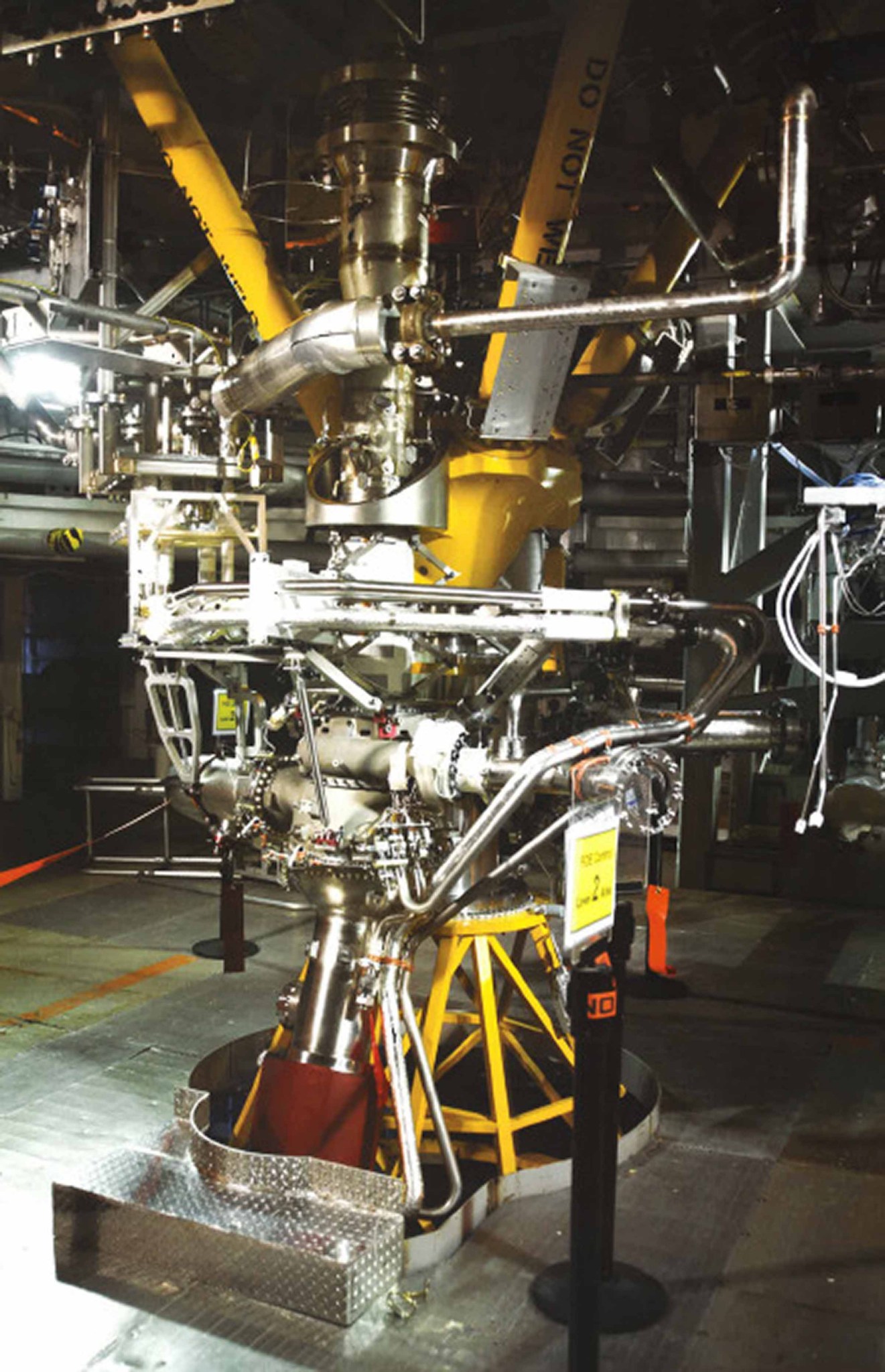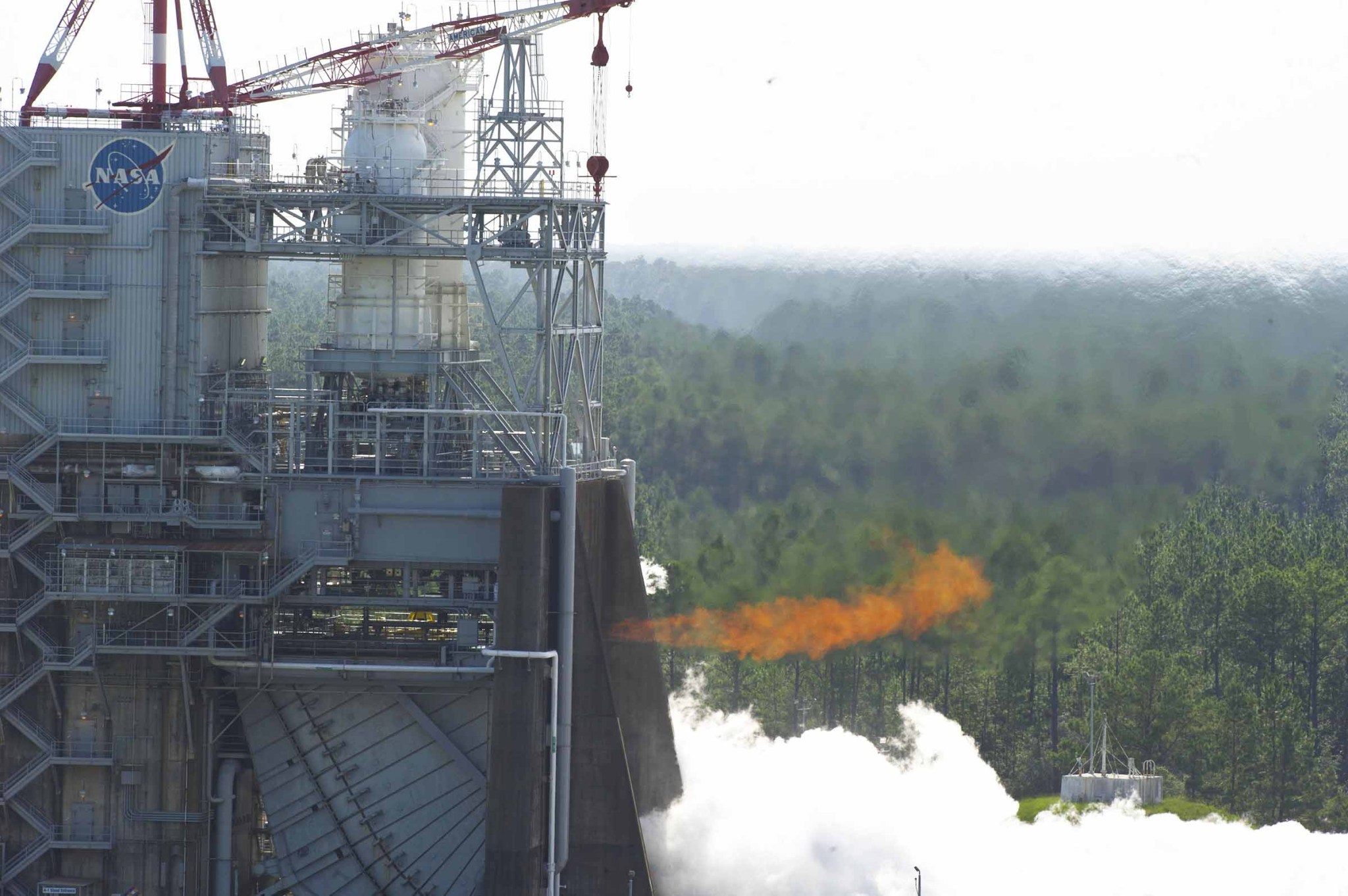At NASA’s Stennis Space Center, a typical hot fire of an RS-25 engine lasts 500 seconds, the same amount of time it must fire to help launch the Space Launch System to orbit.
Ten years ago this month, however, Stennis engineers and operators at the Fred Haise Test Stand conducted a J-2X powerpack test for 1,350 seconds (22 and one-half minutes), almost three times as long. The testing was part of a series designed to support NASA as it continues its mission to explore the secrets of the universe for the benefit of all.
The test on July 24, 2012, also broke a record of 1,150 seconds set just a month earlier and remains the record for the longest-duration firing in the site’s A Test Complex.
It also culminated days of hard work and preparation for the test team and marked yet another milestone for the nation’s largest – and premier – propulsion test site.
“Sometimes, it’s a relief,” A Test Complex Operations and Maintenance Manager Michael Holmes said when describing the emotions that follow a hot fire test. “Sometimes, it’s a joy. But it is always interesting.”
Suffice it to say, the long duration test on July 24 was a challenge as well.
After all, it takes much more time than 22 and one-half minutes to prepare for a test. When test day arrives, months of communication already has taken place between the test article manufacturer and test team at Stennis.
There are a lot of moving pieces throughout the process – to prepare the test article, the stand, and the test team itself. The involved effort heightens the importance of getting the test off successfully when it is planned. For the test 10 years ago, there were more than 30 people working to complete the hot fire that day.
Getting the test facility ready means installing test stand instruments needed to support test specifications and calibrating those instruments to correct settings.
It also means ensuring there are enough propellants to fuel the test. In this case, operators needed 67,298 gallons of liquid oxygen and 211,522 gallons of liquid hydrogen.
The amount almost doubles the capacities of the test stand run tanks, which can hold 40,000 gallons of liquid oxygen and 110,000 gallons of liquid hydrogen. These tanks must be replenished during testing from propellant barges transported to the stand via the Stennis canal waterway system. Ensuring availability of the increased propellant requires coordination among the people delivering fuel to Stennis, loading it on barges, and then transferring it to the test stand as needed throughout the hot fire.
That is only one of the critical functions underway on test day. From engineers monitoring the transfer of liquid hydrogen and liquid oxygen to members of the team monitoring the control system, data system, and video cameras, to those watching for test anomalies, test day can stretch long.
Ensuring pre-test conditions are met can take anywhere from four to five hours before the actual hot fire even begins. During the test, the team then watches data in real time to make sure objectives are being met. For the test 10 years ago, there were six primary objectives and seven secondary objectives.
If something does not look right, prompt adjustments to a valve or pressure setting can be made. Every second of a test can seem extremely long with members of the test team focusing on specific tasks.
“To me test days are a mix between a mid-term exam in college and a sporting event game day,” said Ryan McKibben, Deputy Chief of the Mechanical Operations Branch. “We have prepared our systems as well as we can to test and characterize the hardware.”


In July 2012, operators initially planned for a 1,500-second test, knowing that it likely would hit an automatic cutoff point sometime prior to that time. The cutoff came 1350.524 seconds into the firing.
Completion of a test does not mark the end of the day for the team of operators and engineers, however. Additional work must be done to secure the test article and stand, begin post-test processes, return propellant barges to the Cryogenic Storage Facility, collect all test data, and review lessons learned in preparation for future hot fires. Most data reviews include combing through a couple hundred slides of information.
“Even after testing out at Stennis Space Center for 15 years, test days are still special and I get excited to come to work on those days and learn,” McKibben said.
For information about Stennis Space Center, visit:
C. Lacy Thompson
Stennis Space Center, Bay St. Louis, Miss.
228-363-5499
calvin.l.thompson@nasa.gov

























